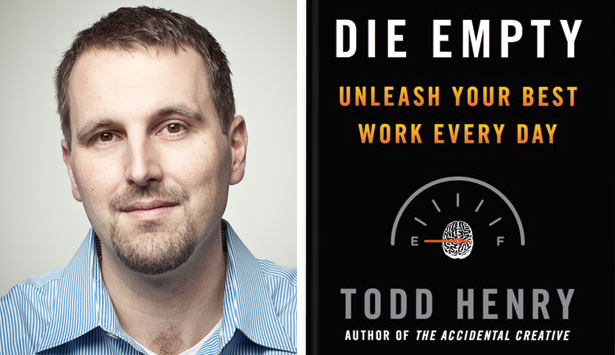07.30.14
Leaders Breakfast Keynote Speaker: Todd Henry Interview
Q: Sometimes, we think “Creatives” are supposed to look or act a certain way. How do *you* spot the creative in the crowd?
A: It’s nearly impossible to spot a “creative” in the crowd, because there is no external profile that holds up under scrutiny. Especially brilliant creatives – problem solvers, mind-workers, those who turn their thoughts into value each day – look, dress, and act just like everyone else on the surface. However, if I were attempting to find the productive creative in the crowd, I would look for the person expressing outward curiosity, exploring the environment, or asking the probing questions. These are some of the markers that signify that someone has an engaged mind and is looking everywhere for ideas and solutions to their challenges.
Q: After reading The Accidental Creative, it seems I need to adopt a lot more planning, note-taking and introspection to further my development as a creative…in fact, it seems anything BUT “accidental”. What do you mean by “Accidental Creative”?
A: The term “accidental creative” refers to the nurturing of serendipity in the course of daily work. Many people believe that creative ideas simply arrive unexpected and unbidden, but if you look at how ideas truly emerge, it’s often the result of periods of immersion in the problem, exposure to outside stimulus, relational connection or conversation, focusing on the context of the problem not just the tasks, and the like. So by building intentional rhythms and practices into your life that support your creative process, you can increase the likelihood of moments of serendipity – or as I call them, “creative accidents” – in your life and work.
Q: Would you define yourself as an “organized” person or a “planner”? Were you always this way?
A: I’ve never been especially organized (even though I love the thought of it), though I have always been a systems person. My lack of felt organization is why I had such an urge to investigate how prolific, brilliant, and healthy creatives were organizing their own lives and codify it into something that I and my team could use. In so many ways, my original research that began over a decade ago was driven from a personal need to understand how to better organize my own life and work.
Q: Have you experienced a time when all the planning and preparing coalesce? When your creativity shines through naturally; assuming that that is the point of the preparation…? Tell me about that.
A: Yes – absolutely. I experience this quite frequently, as do the people I work with, though it rarely feels amazing at the time. That’s the challenge of brilliant ideas: they often don’t feel so in the moment they arrive. It sometimes requires the hard work of integration, refinement, and collaborative adaptation before we start to recognize the diamond in the midst of the pile of rubble. One of the hurdles that all creatives must overcome is the myth of creative ecstasy. More often than not, the epiphany is what Steven Johnson calls “a slow hunch”, and emerges in stages as the fog lifts. To experience the breakthrough requires daily diligence, and a willingness to do things that are effective in the long-run even if they seem inefficient in the short-run. We can’t afford to sacrifice effectiveness on the altar of short-term efficiency.
Laura Serecin, IIDA
Klawiter and Associates


